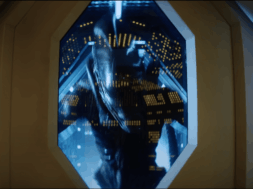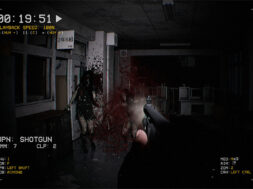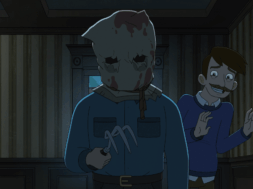*Keep up with our ongoing end of the year coverage here*
You don’t have a gun.
And if you do happen to get your hands on a gun, good luck finding ammo for it.
And if you do find ammo for it, you will quickly run out as your enemy advances on you, undeterred by the slugs you plug in its inky black/oozy red/sickly green chest before your last spent shell clatters to the ground.
Horror games have often put the typical video game power fantasy —the player as a badass with ample artillery to kill anything that moves—squarely in their sights. In Outlast, Red Barrels excised combat like an overexposed stretch of film, swapping out guns in favor of a camcorder for a gory game of hide-and-seek. Until Dawn, P.T., and others have gone even further, offering the player nothing at all.
Even in more traditional survival horror games, like Prey and Resident Evil VII—games where you amass an arsenal of guns that would make a prepper blush—ammo is still scarce. Or, on the other hand, you may have access to a heaving pile of bullets, but no room in your inventory once you’ve made room for your potent assortment of stoplight-coded herbs.
While these games disempower the player to an extent, all of them ultimately allow you to control your forward progress. You don’t need to be good with a gun to make progress in Outlast, but you still need to develop basic skills. And if you do that— if you master the art of hide and sneak— you can control the rate at which you advance through the game.
But, two of 2018’s most talked about horror games rejected the notion that players should control their forward progress entirely. In SEPTEMBER 1999 and Paratopic, the ability to control the pacing is wrested from the player. Instead, a timer directs your fate.
Both Paratopic, from developer Arbitrary Metric, and SEPTEMBER 1999, from YouTuber/indie dev, 98DEMAKE, are “walking sims,” story-focused games that eschew combat or puzzles in favor of storytelling. While Paratopic’s narrative is as fuzzy as its 90s-inspired aesthetic, the game casts the player as three separate characters (not that you can tell from the first-person viewpoint) who are on the hunt for VHS tapes, that are very important for some reason. SEPTEMBER 1999 borrows the found footage graininess of horror films like The Blair Witch Project and Paranormal Activity, trapping the player in two small, boarded-up rooms for a progressively gory evening.

As the games tell their eerie stories, they up the unease by skipping forward at their own rate. SEPTEMBER 1999 takes the same amount of time for every player: 5 minutes and thirty seconds. At various intervals, the tape skips forward; at various intervals, the room changes, getting bloodier. After the first or second shift, you’ll understand where the game is headed, but you have no agency to move the story to its ultimate conclusion. You can move between the rooms, or stand still, but you just have to sit with the uneasy feeling until the game reaches its ending as scheduled.
Paratopic uses the same trick. Implementing cinematic jump cuts in the same way that 2016’s Virginia and 2013’s Thirty Flights of Loving did, Paratopic uses sudden shifts to bounce the player through a variety of locations. An eerie drive with a mysterious briefcase riding shotgun. A grimy apartment complex. A gas station in the middle of nowhere. Paratopic moves the player from location to location unceremoniously, and it does so without warning. Often it takes far longer to change scenes than you might expect. Those driving scenes go on for an uneasily long stretch of time; long enough that your mind begins to wander; that you begin to wonder if you’ll ever get off this hellish stretch of highway.
You begin to wonder if you have any agency in this world. You may even do a quick Google search to see if the drive is supposed to go on this long—the interactive equivalent of asking “Are we there yet?” from the backseat. No response comes from the driver’s seat, but maybe you know the reply by heart anyway:
We’ll get there when we get there.









